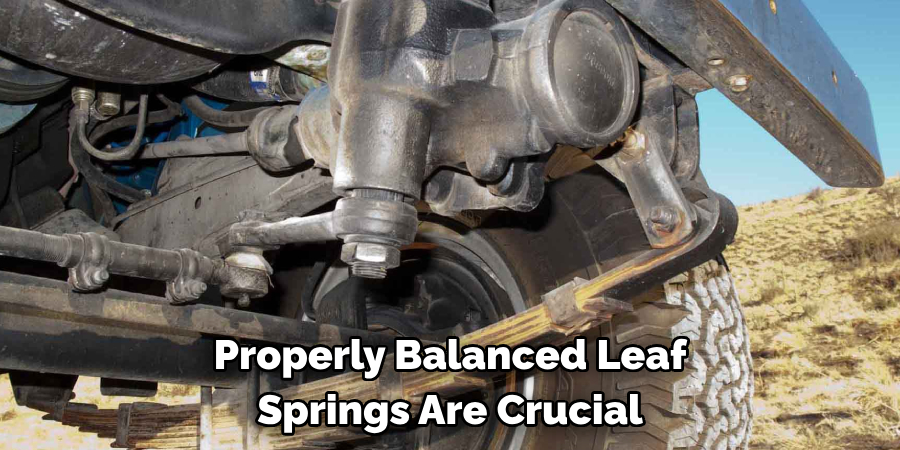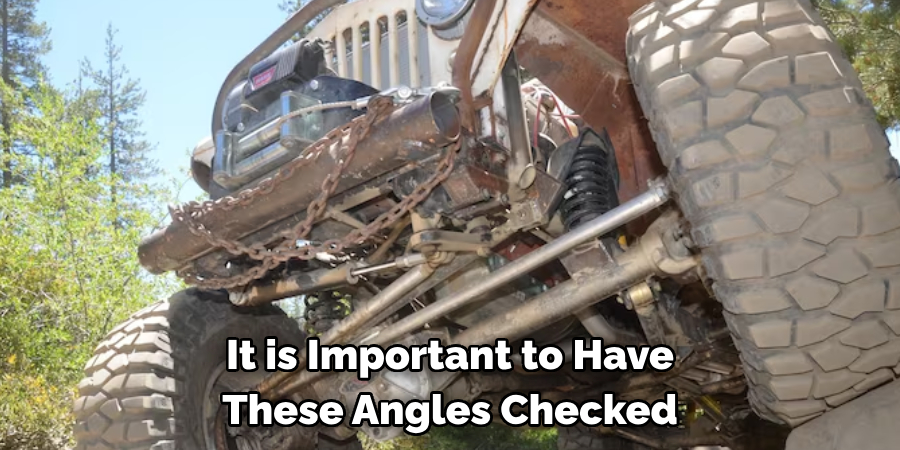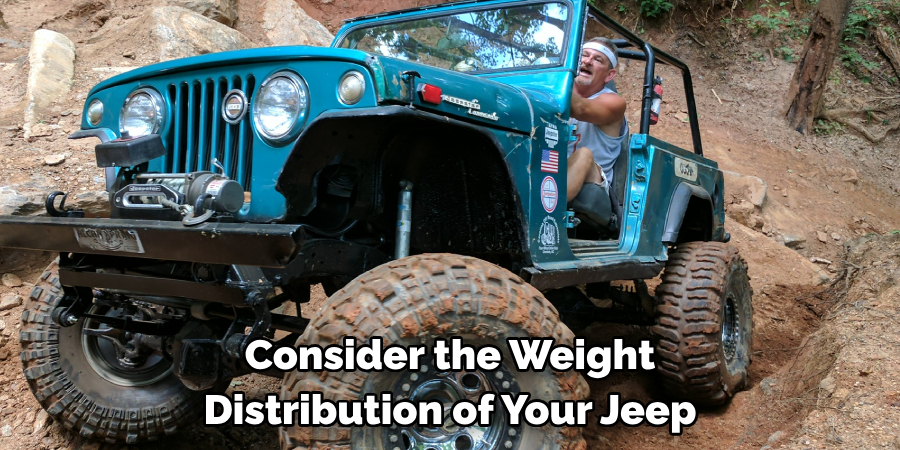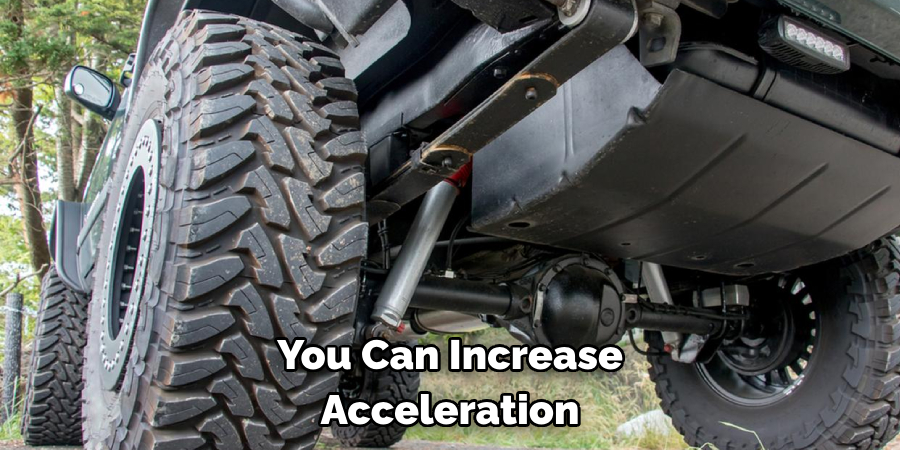Balancing Jeep leaf springs for off-road adventures is a critical aspect of optimizing vehicle performance and ride quality across rugged terrain. Off-roading enthusiasts understand the significance of achieving proper balance to enhance traction, stability, and maneuverability in challenging environments. Balancing Jeep leaf springs involves careful consideration of factors such as load distribution, suspension geometry, and driving conditions.

Whether you’re navigating rocky trails, steep inclines, or muddy terrain, a well-balanced suspension system ensures smoother rides and improved handling. In this comprehensive guide, we’ll delve into how to balance jeep leaf spring on off road.
From understanding the principles of weight distribution to exploring suspension upgrades and tuning options, mastering the art of balancing leaf springs empowers off-road enthusiasts to tackle diverse terrain with confidence and control. Whether you’re a seasoned adventurer or a novice explorer, optimizing your Jeep’s leaf spring balance is key to unlocking its full potential on off-road trails.
Importance of Balancing Jeep Leaf Springs for Off-Road Performance
The importance of balancing Jeep leaf springs for off-road performance cannot be overstated. Properly balanced leaf springs are crucial for maintaining the vehicle’s center of gravity, especially when traversing uneven landscapes where wheel articulation and suspension travel are put to the test.
An unbalanced setup can lead to premature tire wear, increased strain on vehicle components, and even loss of control during critical moments. Therefore, ensuring that your Jeep’s leaf springs are well-balanced will not only improve off-road performance but also enhance safety, ultimately leading to a more enjoyable and secure off-roading experience.
Understanding Leaf Spring Suspension
Leaf spring suspensions are a time-tested solution in the automotive industry, prominently used for their durability and load-carrying capacity. Consisting of several layers of metal strips known as leaves, this type of suspension system stacks the leaves together to act as a single unit.

Leaf springs absorb shocks and maintain wheel alignment by flexing under load and during wheel articulation. This resilience makes them ideal for handling the heavy loads and high-stress conditions often encountered in off-road situations. Understanding how these springs work is pivotal in making any adjustments for balance, as changes to the leaf pack can alter ride height, load capacity, and the overall off-road handling characteristics of your Jeep.
Factors Affecting Leaf Spring Balance
The balance of leaf spring suspension in a Jeep is influenced by several key factors. Vehicle load, including passengers and cargo, fundamentally impacts the distribution of weight and can shift the center of gravity. Aftermarket modifications, like installing heavy-duty bumpers or winches, also play a significant role by adding weight to specific areas of the vehicle.
The condition of the springs themselves is crucial, as worn-out leaf springs may not support the vehicle as intended, leading to an imbalanced stance. Additionally, the type of terrain expected to be encountered demands consideration; rock crawlers may need different suspension setups compared to those primarily traversing sand dunes or mud. It’s important to assess and adjust these factors accurately to achieve an optimal balance that enhances off-road capability while maintaining safety and reliability.
Suspension Geometry and Alignment
When it comes to maximizing the capability of a Jeep on rugged trails, understanding the intricacies of suspension geometry and alignment is essential. Suspension geometry, which includes the angles and linkages of the suspension components, plays a pivotal role in how the vehicle handles terrain.
Proper alignment ensures that the vehicle’s wheels are set to the optimum position, minimizing tire wear and maintaining directional stability. For off-roading, adjustments might be made to the caster, camber, and toe settings to better accommodate uneven surfaces and improve vehicle control.
It is important to have these angles checked and adjusted regularly, especially after the fitment of lift kits or other alterations that affect ride height, as they can drastically alter the Jeep’s handling characteristics. A well-considered approach to suspension geometry and precise alignment can significantly enhance a Jeep’s leaf spring balance and its overall off-road performance.

Importance of Proper Alignment
Proper wheel alignment is critical for the durability and performance of a Jeep’s leaf spring suspension, particularly when it faces the harsh demands of off-road driving. Misalignment can lead to uneven tire wear, diminishing traction and control at times when it’s most needed. Moreover, correct alignment supports the optimal functioning of leaf springs, ensuring that they manage weight distribution and absorb impacts as designed.
Discrepancies in alignment might not only contribute to a rougher ride but also exacerbate stress on suspension components, potentially leading to premature failure. A thorough and routine alignment check can thus prevent costly repairs, extend the lifespan of tires and suspension parts, and most importantly, provide an added layer of safety while navigating challenging terrains.
10 Methods How to Balance Jeep Leaf Spring on off Road
1. Understand Leaf Spring Configuration:
Familiarize yourself with the leaf spring setup on your Jeep. Understand the number of leaves in the pack, their thickness, and the overall spring rate to assess the current suspension characteristics.
Leaf springs are a type of suspension system commonly used in vehicles, including Jeeps. They consist of multiple curved strips of metal, known as leaves, attached to each other at the ends and mounted to the vehicle’s frame.

One of the key aspects of understanding leaf spring configuration is knowing the number of leaves in the pack. This refers to how many individual strips make up the spring assembly. The more leaves, the stiffer the suspension will be. This is because each leaf adds to the overall strength and support of the spring.
2. Evaluate Load Distribution:
Consider the weight distribution of your Jeep, including accessories, cargo, and passengers. Ensure that the load is evenly distributed across the vehicle to prevent sagging or uneven weight distribution on the leaf springs. This is especially important when off-roading or carrying heavy loads, as uneven weight distribution can affect the performance and handling of your Jeep. However, evenly distributing the weight is not just important for driving purposes, but it also helps with fuel efficiency and can prevent unnecessary wear and tear on your vehicle.

3. Adjust Leaf Spring Pack:
Modify the leaf spring pack by adding or removing leaves to adjust the stiffness and load-carrying capacity. Adding leaves increases stiffness and load capacity, while removing leaves decreases stiffness for a smoother ride. It is important to adjust the leaf spring pack according to your intended use and vehicle specifications.
Adding or removing leaves from the leaf spring pack can be done by a professional mechanic or with some basic knowledge and tools, but it is recommended to seek professional assistance for optimal results. To add or remove leaves, first, loosen the U-bolts that hold the leaf springs in place. Then, carefully remove the center bolt and separate the leaf pack from the vehicle.
4. Install Aftermarket Suspension Components:
Consider installing aftermarket suspension components such as sway bars, track bars, or traction bars to enhance stability and control. These components help minimize body roll, axle wrap, and other suspension-related issues. With improved handling, your vehicle will be able to take on twists and turns with ease, making your driving experience more enjoyable.
Additionally, aftermarket suspension components can also help improve the overall performance of your vehicle. By reducing weight and improving suspension geometry, you can increase acceleration, cornering ability, and braking efficiency. This is especially beneficial for those who enjoy participating in motorsports events or off-road adventures.
Furthermore, aftermarket suspension components can also provide a more customized driving experience. With adjustable components such as coilovers, sway bars, and shocks, you can fine-tune your suspension to suit your specific driving style and preferences. This allows for a more personalized and responsive ride.

5. Tune Shock Absorbers:
Adjust the settings of your shock absorbers to match the terrain and driving conditions. Fine-tuning shock settings can improve ride quality, reduce body roll, and enhance overall suspension performance. However, before making any adjustments, it is important to understand the different components of a shock absorber and how they work.
Shock absorbers are an integral part of a vehicle’s suspension system. They work by absorbing energy from bumps and vibrations in the road, which helps to keep your vehicle stable and comfortable. There are two main types of shock absorbers: gas-charged and hydraulic. Gas-charged shock absorbers use nitrogen gas to regulate the movement of the suspension, while hydraulic shock absorbers use a special fluid to do the same.
To adjust your shock settings, you will need to locate and access the shock absorbers on your vehicle. This can usually be done by removing the wheel and tire assembly or by accessing them from underneath the vehicle.
6. Check and Adjust Alignment:
Ensure proper alignment of suspension components, including caster, camber, and toe angles. Misaligned suspension components can cause uneven tire wear and affect vehicle handling and stability. This can lead to poor performance and safety issues while driving.
To check alignment, you can use a alignment gauge or take your vehicle to a professional mechanic. The gauge will measure the angles of each wheel, allowing you to see if any adjustments need to be made. If you notice uneven tire wear or have trouble steering straight, it may be time for an alignment adjustment.
Adjusting alignment typically involves making small adjustments to the suspension components using specialized tools. It is important to have this done by a professional as they have the expertise and equipment to make precise adjustments.
7. Upgrade Bushings and Mounting Hardware:
Inspect and upgrade bushings and mounting hardware to ensure proper alignment and reduce noise, vibration, and harshness (NVH). Polyurethane or rubber bushings provide better durability and performance compared to worn-out or deteriorated bushings. They also help reduce road noise and vibrations, resulting in a smoother and more comfortable ride.
Bushings are small rubber or polyurethane components that serve as buffers between metal parts, such as the suspension and frame. Over time, these bushings can become worn out or damaged due to constant exposure to road debris, moisture, and extreme temperatures. This can lead to misalignment, uneven tire wear, and increased NVH.
To upgrade your bushings, start by visually inspecting them for any signs of wear or damage. Look for cracks, tears, or excessive movement when pushing on the suspension components. If you notice any issues, it’s best to replace the entire set of bushings rather than just one individual piece.
8. Consider Leaf Spring Helpers:

Explore options such as add-a-leaf kits, airbags, or coil spring helpers to augment the load-carrying capacity of your Jeep’s leaf springs. These helpers provide additional support and stability, especially when carrying heavy loads or towing.
Leaf spring helpers are aftermarket parts that can be installed on your Jeep’s leaf springs to increase its load-carrying capacity. They come in various options such as add-a-leaf kits, airbags, or coil spring helpers. Each option has its own unique benefits and it is important to choose the one that best suits your needs.
Add-a-leaf kits are a popular choice among Jeep owners as they are a cost-effective way to increase the load-carrying capacity of your vehicle. These kits involve adding an extra leaf to your existing leaf spring pack, providing additional support and stiffness for heavy loads.
9. Maintain Proper Tire Pressure:
Monitor and adjust tire pressure according to the manufacturer’s recommendations and driving conditions. Proper tire pressure ensures optimal traction, handling, and ride comfort, contributing to a balanced suspension system. In addition, maintaining correct tire pressure can also improve fuel efficiency and prolong the life of your tires.
Tire rotation is another important aspect of tire maintenance. Regularly rotating tires helps to distribute wear evenly across all four tires, resulting in longer tread life and improved performance. It’s recommended to rotate tires every 5,000-7,500 miles or at least once a year.
Proper alignment is crucial for safe and efficient driving. Misaligned wheels can cause uneven tire wear, reduce fuel efficiency, and affect vehicle handling. It’s recommended to have your wheel alignment checked every 6 months or whenever you notice irregular tire wear.
10. Regular Maintenance and Inspection:
Conduct regular maintenance and inspection of leaf springs, bushings, mounting hardware, and suspension components. Lubricate pivot points, inspect for signs of wear or damage, and address any issues promptly to prevent further damage and ensure long-term reliability. Additionally, regularly check tire pressure and alignment to optimize suspension performance and prevent premature wear on tires.
Routine maintenance tasks for leaf springs include cleaning off dirt and debris, checking for any cracking or warping in the metal, and lubricating pivot points with a high-quality grease. Over time, leaf springs can become weak or damaged due to constant stress and exposure to harsh road conditions. By regularly inspecting and maintaining them, you can prevent more serious issues from arising in the future.
Evaluate Aftermarket Suspension Kits
If you’re looking to further enhance your Jeep’s off-road capabilities or road performance, consider investing in aftermarket suspension kits. These kits often provide higher ground clearance, improved shock absorption, and better handling characteristics, making them ideal for Jeep enthusiasts looking to conquer challenging terrains or simply wanting a more robust ride.
Aftermarket suspension kits can range from basic lift kits that increase ride height to complex systems with adjustable control arms, enhanced shocks, and upgraded sway bars. Before making a purchase, assess your specific driving needs, the types of loads you’ll be carrying, and the predominant terrain you’ll be facing. Always opt for quality brands that offer reliability and come with a warranty, as these kits can significantly alter your vehicle’s suspension dynamics and safety.

Prioritize Safety Considerations
When modifying your Jeep’s suspension, always prioritize safety by ensuring all components and modifications comply with legal standards and vehicle safety guidelines. It’s critical to use aftermarket parts that meet or exceed OEM specifications and to have all adjustments and installations performed by qualified professionals.
Furthermore, keep in mind that significant modifications can affect your Jeep’s handling, so it’s advisable to acclimate yourself to any changes in vehicle dynamics before embarking on challenging drives or treks. Regularly inspect all modified components for signs of wear or fatigue, and replace any items that compromise the vehicle’s structural integrity or performance. Remember that while aftermarket enhancements can improve capability and appearance, they should never compromise safety.
Conclusion
In conclusion, achieving a balanced Jeep leaf spring system for off-road adventures is fundamental to enhancing vehicle performance, stability, and comfort across various terrain types. By implementing the comprehensive methods outlined above, off-road enthusiasts can fine-tune their Jeep’s suspension system to navigate rugged landscapes with confidence and control.
From adjusting leaf spring configurations and installing aftermarket components to maintaining proper alignment and tire pressure, each method contributes to achieving optimal balance and handling characteristics. Regular maintenance, inspection, and tuning are essential for preserving the integrity and reliability of the suspension system over time. Thanks for reading, and we hope this has given you some inspiration on how to balance jeep leaf spring on off road!

About
JeepFixes Team is a skilled author for Jeep Fixes, bringing 6 years of expertise in crafting a wide range of jeep fixes. With a strong background in jeep fixes work, JeepFixes Team’s knowledge spans various types of fixtures, from decorative pieces to functional hardware, blending precision with creativity. His passion for jeep fixes and design has made him a trusted resource in the industry.
Professional Focus:
Expert in Jeep Fixes : JeepFixes Team aesthetic specializes in creating durable and innovative jeep fixes, offering both appeal and functionality. His work reflects a deep understanding of jeep fixes techniques and materials.
Sustainability Advocate : He is dedicated to using sustainable practices, ensuring that every fixture is crafted with eco-friendly methods while maintaining high-quality standards.
In his writing for jeep fixes, JeepFixes Team provides valuable insights into the latest trends, techniques, and practical advice for those passionate about jeep fixes, whether they are professionals or DIY enthusiasts. His focus on combining artistry with engineering helps others discover the true potential of jeep in design.
